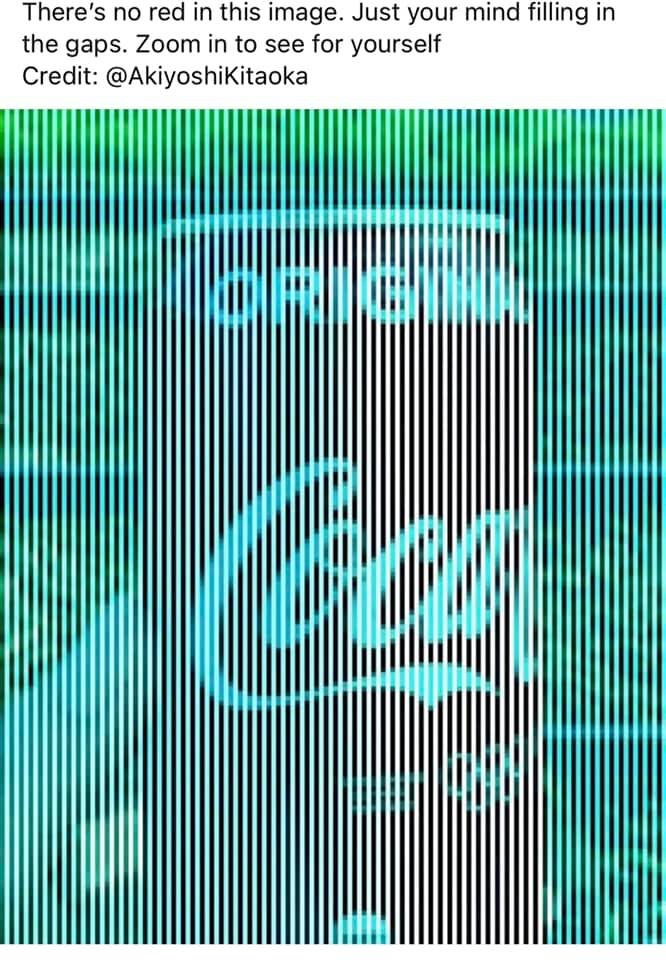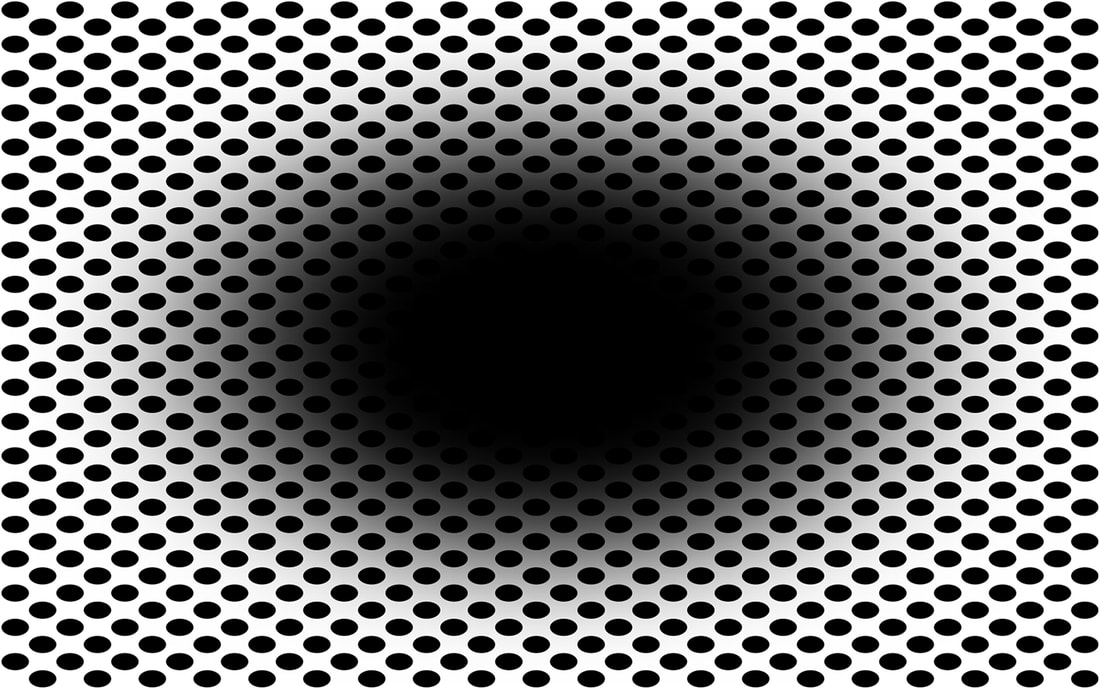Optical Illusions: Color Consistancy, Shapeshifting, Falling Into Black Hole, Illusion Of Brightness
Color Consitancy
click on image below to make full size
Akiyoshi Kitaoka, a Professor of Psychology at Ritsumeikan University in Japan, specializes in optical illusions and has been making them for over a decade. It might be hard to swallow the truth, but there is no red in this photo at all, only pixels of color that appear red relative to the other colors.
Kitaoka’s picture uses something called color constancy. To understand the concept, it’s helpful to consider the brain’s purpose and how it functions. The goal of your brain is not to memorize and record every piece of data it receives—that would be impossible—but to generate a complete picture of the world that we can recognize and understand.
In the case of color, specialized neurons in the primary visual cortex compute ratios within the eye’s cone cells, which are responsible for color vision. A breakthrough in understanding the concept came in 1967 by studying goldfish. “If the cell is excited by red light in the center,” wrote Nigel Daw in ’67, “then it will also be excited by green light in the periphery, and inhibited by green light in the center or red light in the periphery.”
In other words, your eyes will send color signals to your brain partially based on other colors it sees and the relative difference between those colors. This is why you can look at an entirely green-gray photo and see red.
Kitaoka’s picture uses something called color constancy. To understand the concept, it’s helpful to consider the brain’s purpose and how it functions. The goal of your brain is not to memorize and record every piece of data it receives—that would be impossible—but to generate a complete picture of the world that we can recognize and understand.
In the case of color, specialized neurons in the primary visual cortex compute ratios within the eye’s cone cells, which are responsible for color vision. A breakthrough in understanding the concept came in 1967 by studying goldfish. “If the cell is excited by red light in the center,” wrote Nigel Daw in ’67, “then it will also be excited by green light in the periphery, and inhibited by green light in the center or red light in the periphery.”
In other words, your eyes will send color signals to your brain partially based on other colors it sees and the relative difference between those colors. This is why you can look at an entirely green-gray photo and see red.
Shapeshifting Objects
For another great Japanese optical illusion, be sure to check out the shapeshifting objects out of Meji University.
Falling Into A Black Hole
New optical illusion makes 86% of people feel like they’re falling into a black hole.
Stare at the black blob in the center. Most people perceive the blob as expanding or feel that they’re falling toward the hole. This new-to-science illusion has given researchers some more insight into how human vision works, and it shows how our perception of the world is shaped by predictions our brain makes.
Unlike other black hole illusions that have resulted in someone literally falling into a big hole, this black blob—created by Akiyoshi Kitaoka as part of research published earlier this week—is set against a pattern of smaller black dots on a white background and is a completely static image. It creates a false sense of movement that also causes the observer’s pupils to expand, according to the study. The physical reaction happens no matter where the observer is, even if they’re looking at the illusion in a well-lit room where pupil adjustments aren’t needed. There’s seemingly no reason for the physical response to occur, but the researchers believe this illusion demonstrates how our brains compensate for the processing time needed to visually perceive the world around us in real-time, and that certain involuntarily reflexes aren’t necessarily controlled by someone’s physical reality.
Unlike other black hole illusions that have resulted in someone literally falling into a big hole, this black blob—created by Akiyoshi Kitaoka as part of research published earlier this week—is set against a pattern of smaller black dots on a white background and is a completely static image. It creates a false sense of movement that also causes the observer’s pupils to expand, according to the study. The physical reaction happens no matter where the observer is, even if they’re looking at the illusion in a well-lit room where pupil adjustments aren’t needed. There’s seemingly no reason for the physical response to occur, but the researchers believe this illusion demonstrates how our brains compensate for the processing time needed to visually perceive the world around us in real-time, and that certain involuntarily reflexes aren’t necessarily controlled by someone’s physical reality.
Illusion of Brightness
Another image that demonstrates this phenomenon is Akiyoshi Kitaoka’s “Asahi” illusion of brightness. Our brains perceive the white at the middle of the illusion as being much brighter than the white surrounding it, when in reality they both have the exact same RGB values, and the brightness of the image is completely uniform.
https://gizmodo.com/black-hole-optical-illusion-pupil-size-1849000697



